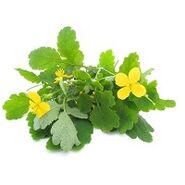
Effective treatment against foot fungus. Foot fungus is a fairly common disease, according to statistics at least a quarter of people on Earth suffer from it. The situation is aggravated by the fact that most people do not even suspect that they are carriers of the fungus because it settles and develops unnoticed at the same time.
The fungus not only causes aesthetic and physical discomfort, but also synthesizes toxic substances that can accumulate in the body and poison it. That’s why it’s so important to know how to prevent and fight the disease to stay healthy. How does the fungus affect the feet and what contributes to it?
Causes of foot fungus
Simple ways for parasitic fungi to penetrate the skin can be cracks and abrasions between the toes due to excessive sweating or, conversely, dry feet, all kinds of abrasions due to wearing too narrow shoes, and poor foot wiping after water treatments. . In addition, various endocrine and vascular diseases, varicose veins, diabetes, flat feet, and decreased immunity or stress can cause fungal infections.
The fungus spreads in close contact with the patient through the objects he uses - towels, washcloths, shoes, clothes, manicures, and even a comb. Particularly in this respect, common areas such as baths and swimming pools are becoming dangerous. because heat and humidity are ideal. conditions for fungal development. In a nail plate made almost entirely of keratin, the fungus begins to grow and multiply slowly. It gradually takes the place of the nail, dissolves it, and begins to spread further on the surrounding skin. In the case of a fungal infection, cracks and peeling develop first between the toes, and later the skin begins to turn red and itchy.
Signs of foot fungus
Typical symptoms of foot fungus are:
- darkening of the nail
- nail platinum becomes brittle and peeling
- the shape of the nail itself is deformed
- pain at the end of the toes
- bad smell
Therefore, in the first manifestations of a fungal infection, measures should be taken urgently to control the fungus in order to stop its spread on the skin. If the fungus is not treated at all, it spreads from one nail to another and then to nearby areas of the skin, in very advanced cases even the internal organs are damaged.
If in doubt about whether you have a fungus, you can do one of these screenings at home: dilute the potassium permanganate crystals in warm water to make a purple solution. Immerse your feet in it and hold for a while. The affected areas of the nail will remain light and the unaffected areas will be brown.
You can contact a dermatologist - a dermatologist who is likely to send you an analysis - to determine the type of fungus and then prescribe the treatment you need.
The treatment of foot fungus is a folk remedy
You can effectively treat the foot fungus with folk methods, especially this treatment can be successful at the very beginning of the disease. In the past, before such strong antifungal drugs were sold in pharmacies, people used to treat and treat fungal infections without folk recipes:

- Treatment of foot fungus with onions. The easiest way to treat with onions. Grate the onion head and squeeze the juice and apply the fungus to the areas on the legs. When the juice dries, the feet do not need to be washed, the procedure is best done before going to bed.
- Sea salt. A solution of sea salt within 10 days will help heal the fungus. Wash your feet twice a day - morning and evening in a sea salt bath (1 teaspoon to 1 glass of water). Then moisten the cotton wool in saline, apply the cotton wool to the area affected by the fungus and keep until dry. Then wash your feet with soda solution (the ratio is the same as your sea solution) and dry your feet.
- With garlic. Treatment of foot fungus with garlic salt infusion has a good effect. Make a saline solution (take 1 teaspoon of salt per 1 liter of water). Take 1 tablespoon of this solution and add 1 large clove of crushed garlic. Strain and squeeze through the cheese cloth, add an additional 4 tablespoons of saline to the resulting mixture. Apply the reconstituted solution twice a day to the affected areas. A fresh solution should be prepared for treatment each time.
- Clay treatment. Clay is another helper in foot mycosis. Dilute the clay powder (available at the pharmacy) to a thick sour cream texture with cold water and apply a thick layer to the affected areas, covering with a linen cloth. You need to remove the bandage before the clay dries, then rinse your feet with lemon solution (1 tablespoon lemon juice in 1 glass of water). Clay creams should be applied at least twice a day, preferably 3 times, with a new dose of clay each time.
- Celandine juice. In summer, if celandine grows in your country house, you can use the juice of this plant as it has a strong antifungal effect. The plant should be removed, the orange juice should appear on it immediately and smear on the affected areas. Keep in mind that the procedure is not very pleasant, itching is felt, but as the juice is absorbed, it passes. After a few minutes, smear the area again with juice and do this 3-4 times. The procedure should be repeated twice a day for one month. In addition, you can make yourself celandine oil, which can be used against foot fungus all year round, and not just in the summer when this plant blooms.
- Celandine compress treatment. If you have a dry celandine herb, grind it into a powder and mix it with tea tree oil to get a thick emulsion. Apply to the affected areas of the legs as a compress daily. Do this until the old fungal nail comes off and a new one does not grow in place.
- Propolis. Alcohol tincture of propolis is an effective and affordable medicine against fungi, you can always buy it at the pharmacy. Propolis, which has antipruritic, anti-inflammatory, bactericidal, regenerating and anesthetic effects, is harmful to the fungus. Moisten a cotton ball with 20% propolis tincture and apply to the affected area, wrap your feet in polyethylene and secure everything with a bandage, the procedure is best done at night. After about a month of treatment, the fungus affected by the fungus comes off and a new woman replaces it.
- Apple vinegar. Apple cider vinegar is another effective remedy for foot fungus, apply it to the affected areas several times a day and the fungus will withdraw. You can do this, for example, by watching your favorite show while sitting in front of the TV. Apply a cotton ball moistened with apple cider vinegar to the problem areas of your feet, then replace it with a new one if it is dry. Over time, the fungus lands on the legs.
- Herbal balm. You can make yourself a healing antifungal herbal balm: pour 0. 5 liters of sunflower oil into an enamel bowl and add 1 tablespoon of chopped dry herbs: peppermint, comfrey and golden root (Rhodiola rosea). Put on low heat and heat to a maximum of 65 degrees. Turn off the stove and let it cook for 12 hours, strain. Add oily solutions of vitamins A, E and D to the balm, 1-1 tbsp, mix everything and apply the balm to the affected areas at least 2 times. The balm should be stored in the refrigerator, the shelf life should not exceed six months.
- Birch tar. Birch tar sold in pharmacies is the other strongest enemy of the fungus. Apply the affected areas to the toes and nail plates each time after showering and do not wash afterwards. After several such procedures, you will not even notice that the fungus disappears without a trace. Personally, this method helped me a lot in coping with the foot fungus I picked up once while visiting the pool.


If someone has fungus in their family, they should take precautions to avoid infection.
- Until the patient heals the fungus, do not walk barefoot in the house and sit with your feet on the couch or chairs.
- Before bathing, wash thoroughly with any liquid, chlorinated product that kills the fungus.
- Scissors, nail files and other items needed for pedicures and manicures should be wiped with alcohol.
- If the fungus was found in one of the spouses, you should lie down in a clean, ironed cotton sock and change the bedding weekly.
- Be sure to wipe the shoes with apple cider vinegar, 40% acetic acid, or formalin solution.
Prevention of foot fungus
- Never wear anyone else’s shoes, and when you visit, they will offer you slippers. It’s better to bring change shoes with you or go to the room in socks.
- In the cold season, always change your shoes to replaceable shoes, don’t let your feet overheat because mushrooms start attacking when your feet are sweating.
- Don't forget to bring rubber slippers when visiting the sanarium, swimming pool, sauna, spa or spa. In the bath, pour boiling water on a bench and a washbasin, lay a sheet or towel on the shelf, only you can sit on them.
- Do not walk barefoot in hotels, sports lockers, train cabins and other public places, as well as without a slate beach. The last precaution is not unnecessary either, the wet hot sand is a medium for fungal infections, it hides a lot of fungal scales and nail fragments.
- Replace the bath and shower pads with cloth and sponge to rubber. Moisture stays in their folds, skin flakes and nail fragments get stuck, and the rubber mat can always be easily poured off with hot water.
- After showering or bathing, wipe your feet thoroughly dry, and take special care between the toes to keep moisture out of it and thus the chances of the fungus settling.
- Change socks, stockings or stockings every day. Do not temporarily allow anyone to write down documents, manicures, sponges, wipes.
- Do not wear the same shoes for more than two days in a row. Allow to dry properly during the day.
- Never try to barefoot when buying shoes.
- Monitor the condition of your feet, take good care of your feet - take timely action against sweating, dryness, hardening of the skin and prevent the formation of cracks in your feet.
- If you still suspect you may get mushrooms while visiting the pool or beach, treat your feet when you get home with a cotton ball dipped in a 6% table vinegar solution or wash your feet. with tarry soap.
Follow these precautions, remember that the disease is always easier to prevent than to treat later.






























